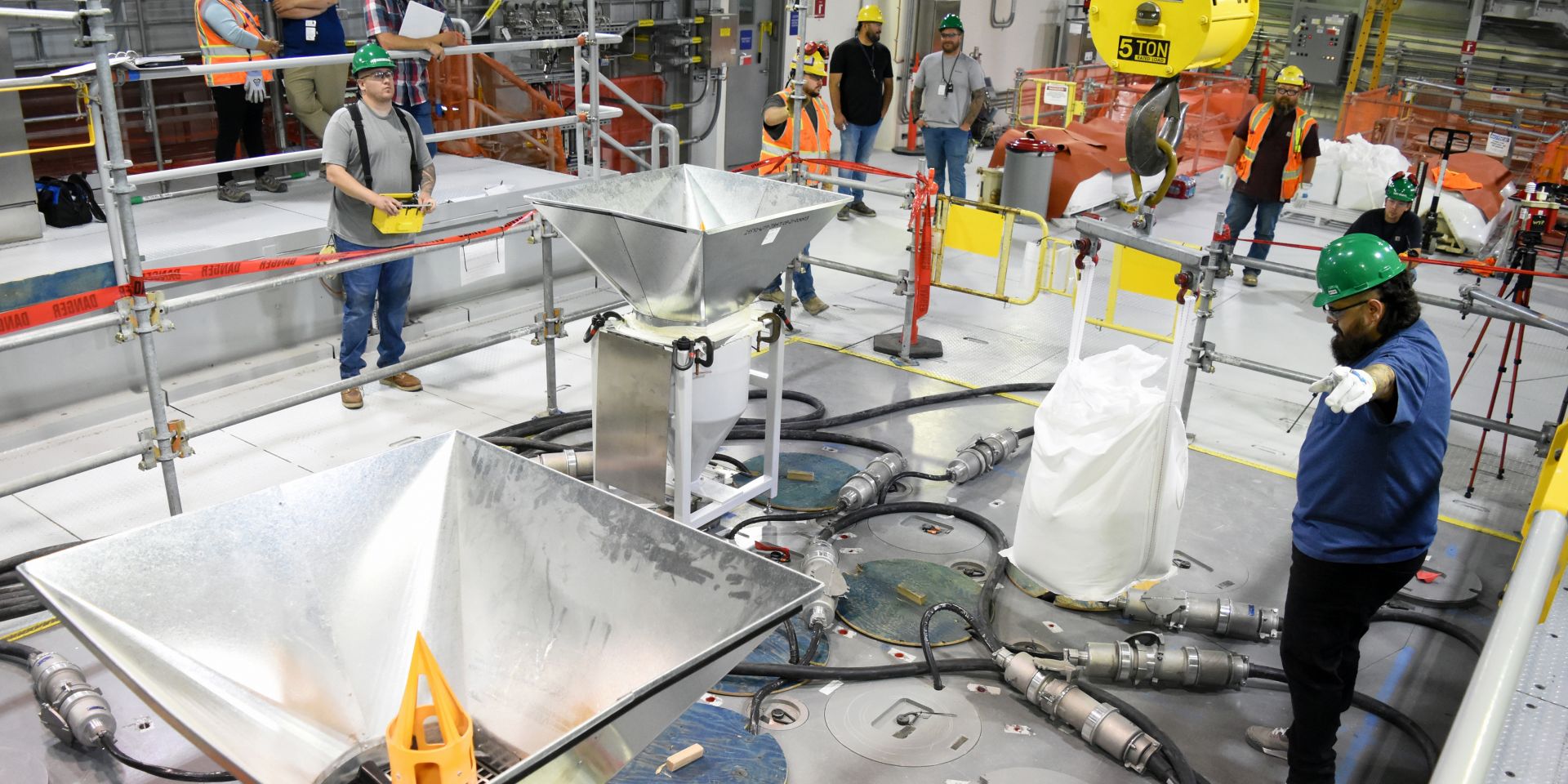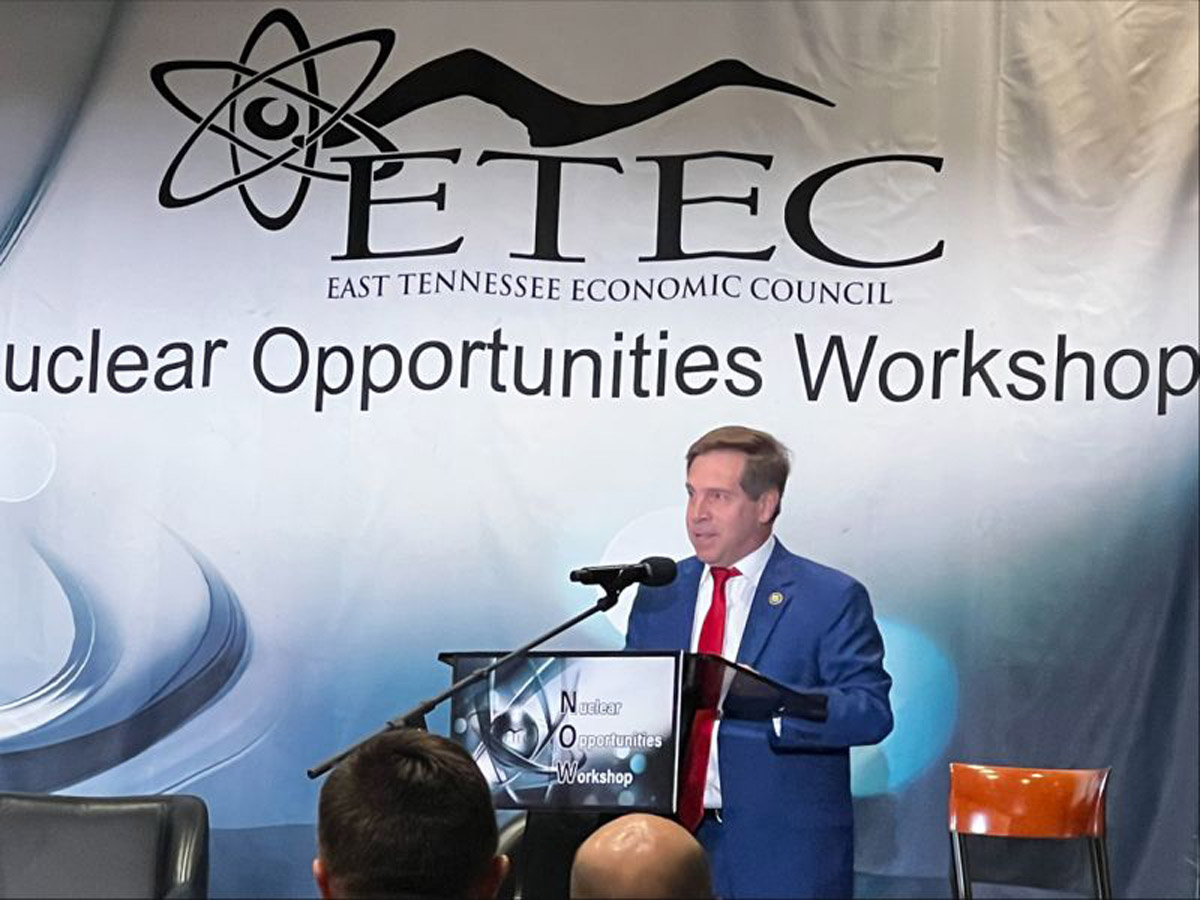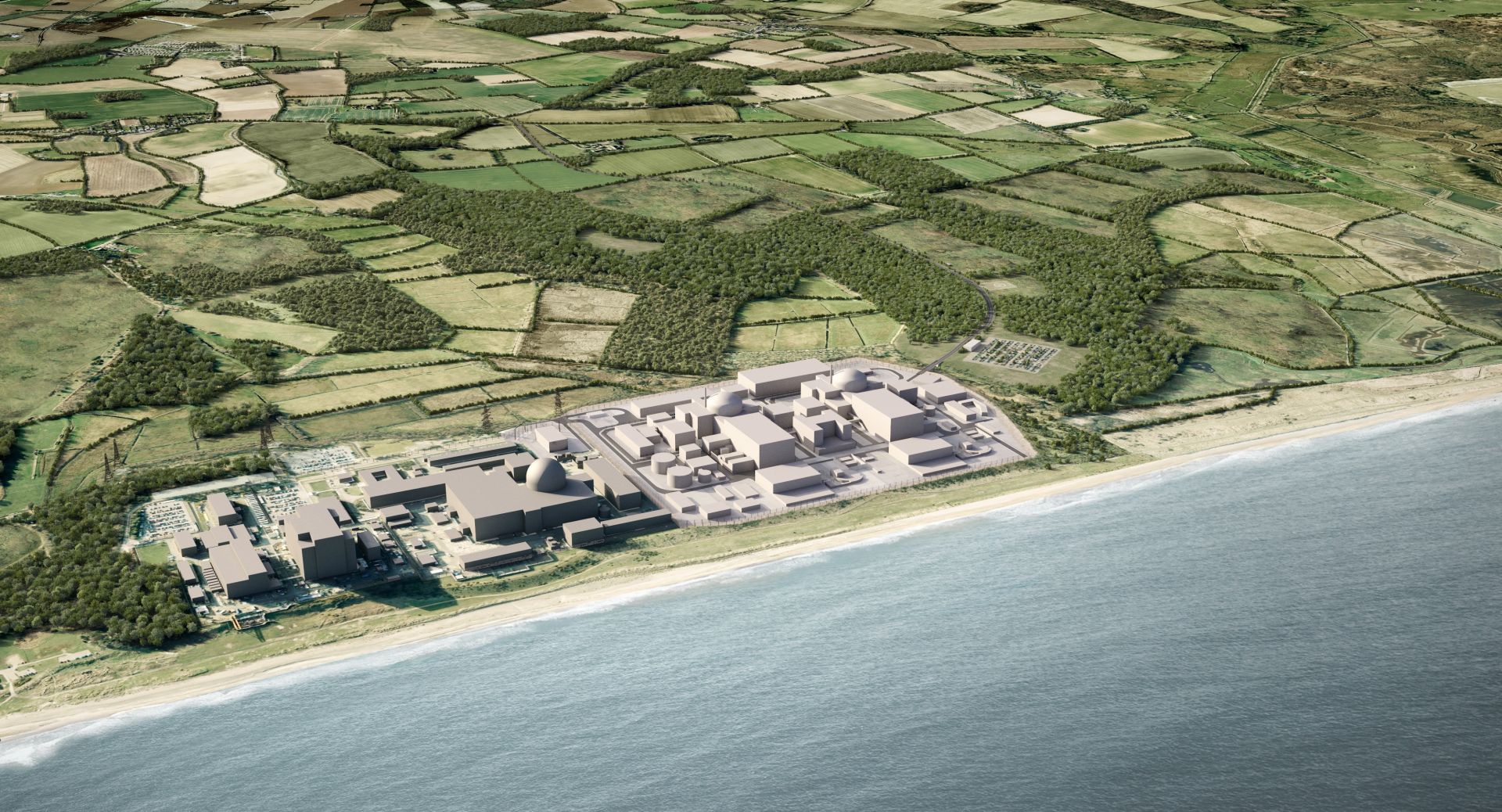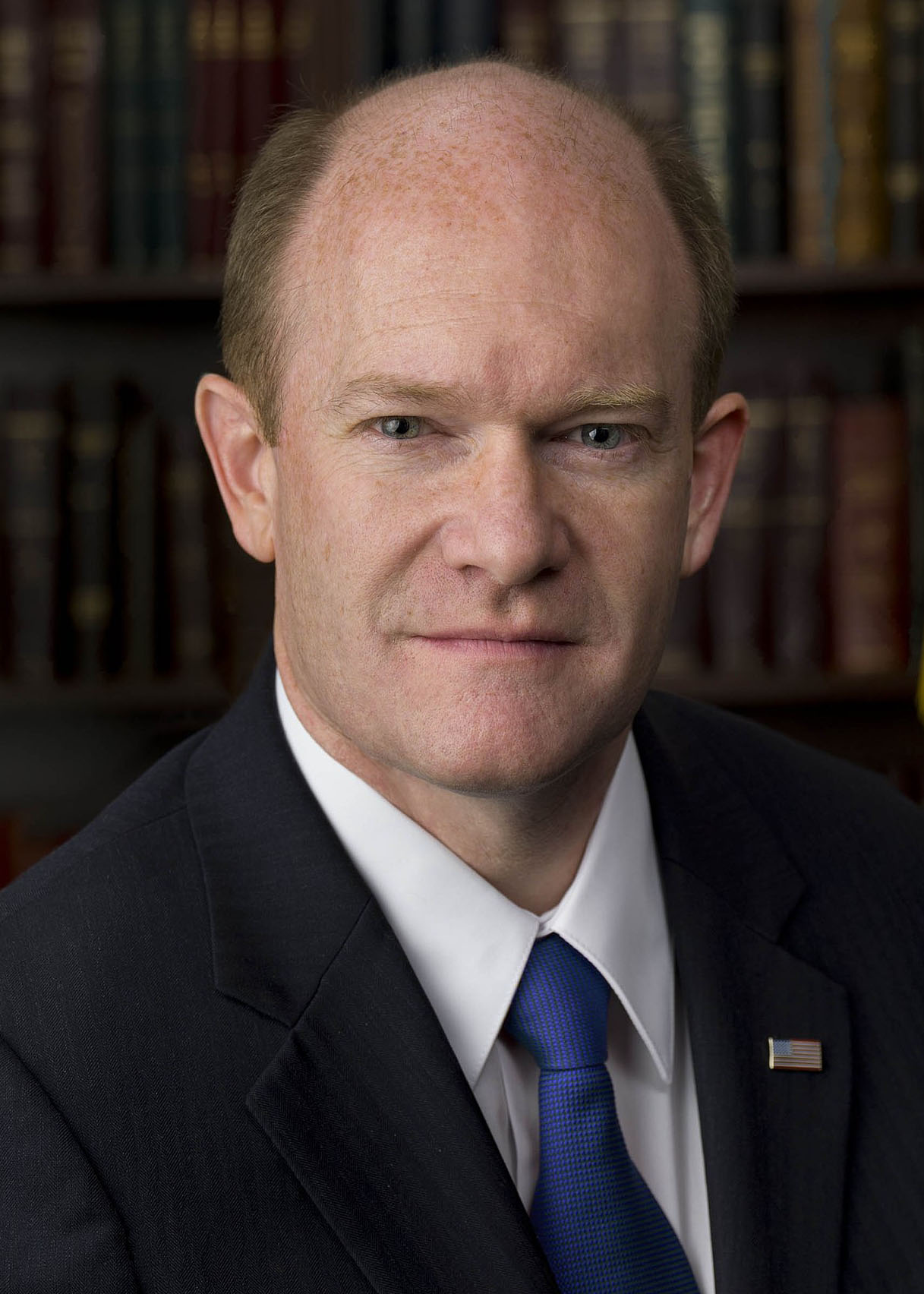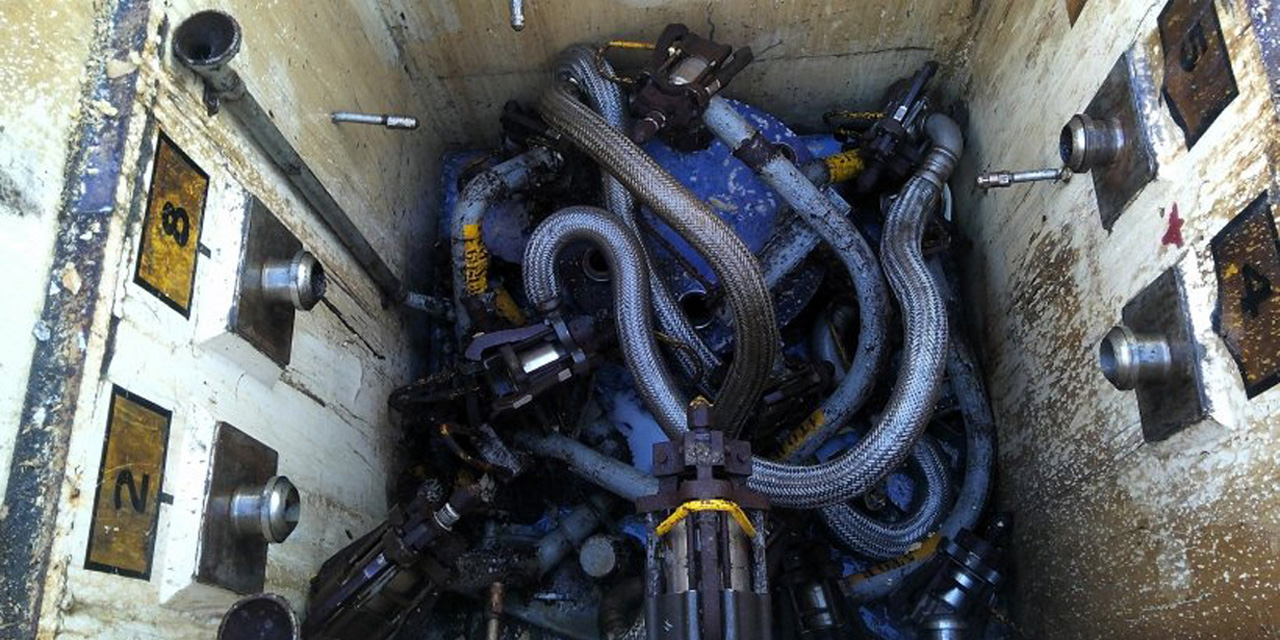A 300-pound bag of frit is in position to be poured into the melter at Hanford’s LAW Facility. (Photo: Bechtel National)
The Department of Energy’s Office of Environmental Management announced that the first batches of glass-forming beads, called frit, were poured last week into a melter at the Hanford Site’s Waste Treatment and Immobilization Plant (WTP), also known as the Vit Plant. The melter, which has been heated to 2,100ºF, will be used to immobilize Hanford’s radioactive and chemical tank waste, turning it into a stable glass form through vitrification.
From left, interns Justin Vu Le (SRMC), Zaire Shaw (SRNL), and Neal Thakkar (SRNS) were the featured speakers at an Up & Atom breakfast. (Photo: CNTA)
Three college interns from the Savannah River Site were the keynote speakers at a recent Up & Atom Breakfast hosted by Citizens for Nuclear Technology Awareness (CNTA). The breakfast was held at Newberry Hall in Aiken, S.C.
Some of the participants of the recent SRNL-Hanford Analytical Knowledge Sharing Workshop pause for a photo. (Photo: DOE)
A rendering of the Sizewell site on the Suffolk coast. Sizewell A and B are to the left and center (respectively) in the image; the section to the right is Sizewell C. (Image: EDF Energy)
The U.K. government recently confirmed a further £170 million (about $216 million) investment of previously allocated funding for development work on the proposed Sizewell C nuclear power plant project in Suffolk, England.
Workers at the Hanford Site dubbed this network of waste tank connections “Medusa” because it looked like a head covered with snakes. (Photo: DOE)
Workers at the Department of Energy’s Hanford Site in Washington state recently removed a complex piece of equipment that had been standing in the way of future tank waste retrieval.
An artist’s rendering of Natrium. (Image: TerraPower)
Advanced nuclear technology firm TerraPower announced today the selection of four suppliers to support its Natrium reactor demonstration project, in development near a retiring coal plant in Kemmerer, Wyo.
Marking the NRC’s acceptance of NuScale’s standard design approval application for formal review are, left to right, Getachew Tesfaye, NRC senior project manager; Robert Gamble, NuScale vice president of engineering; Brian Smith, NRC director of the Division of New and Renewed Licenses; Carrie Fosaaen, NuScale vice president of regulatory affairs; Karin Feldman, NuScale vice president of the program management office; Robert Taylor, NRC deputy office director for new reactors; and Mark Shaver, NuScale director of regulatory affairs. (Photo: NuScale)
The Nuclear Regulatory Commission has accepted for formal review NuScale Power’s standard design approval (SDA) application for its updated small modular reactor design, the Portland, Ore.–based firm announced yesterday.
